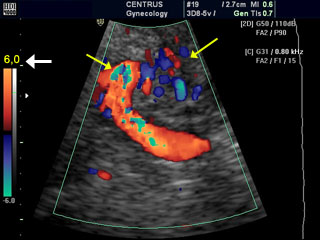Are you set to undergo a front tooth root canal treatment?
Then you may have concerns about the process, like how your tooth will feel afterwards or if it will be painful. The root canal procedure strikes unease in people even though it is one of the most common dental procedures that dentists perform – especially when you are getting a root canal on your front tooth. Worrying about it is a valid concern, since the process is designed to not only remedy your smile but eliminate your pain and oversensitivity.
But first, let’s talk about the front tooth root canal. By understanding each step of the procedure, you will be able to feel at ease about getting root canal therapy in Grande Prairie.
Table of Contents
What is a Front Tooth Root Canal?
Although front root canal treatment is more or less the same as it is for any other tooth, there are, however, certain unique characteristics to take into consideration.
The front root canal is considered an easy-to-endure treatment because the pulp is thinner there. Less pulp also means it’s not as painful, especially because local anesthesia should not make you feel anything.
The procedure, though it is almost similar, is easier to conduct and less painful than a root canal at the back.
Is it Safe?
While you shouldn’t be experiencing any pain after root canal treatment, there are a few things you should know in order to have a successful root canal.
Root canals are a common treatment that is well-established and proven to be very efficient. Almost every other person gets a root canal done by an endodontist (a dentist who specializes in caring for the pulp), so you can rest easy knowing that you’ll be in capable hands the entire time.
Will it Hurt?
The answer, which may surprise you, is no. Root canals are a normal, standardized procedure that’s performed in order to relieve tooth discomfort and pain.
The treatment is carried out with the use of local anesthesia, so you won’t feel a thing while your dentist works. When the anesthesia wears off, it’s common to have some soreness, but this can be balanced with over-the-counter painkillers.
Most people agree that the hardest part of the treatment is keeping your mouth open for the entire appointment.
What To Do Before the Procedure?
You must follow the advice of your dentist in Grande Prairie before you begin with the treatment. Unless you are getting IV sedation, your dentist will want you to eat properly and get enough sleep prior to coming into the clinic.
What does the Procedure Consist Of?
All the root canals begin by having a hole drilled in the tooth so that the interior pulp chamber and canals can be accessed. For back teeth, such as premolars and molars, this hole is built in the top or biting surface of the tooth. The front teeth, on the other hand, do not have a large biting space to which a dentist could gain access.
For front teeth, a hole is drilled via the back of the teeth until the pulp is reached. Once the pulp is reached, it is carefully removed, and the hollow space inside the tooth is disinfected. This hollow space is further smoothed and shaped using specialized instruments. This smoothing and shaping allow the area to be easily filled with topical antibiotics to ensure the infection is gone and the space in the tooth is filled.
The hole is then temporarily filled with the material after the canals have been filled, which is typically the last step in root canal therapy.
What to do Post-Procedure?
The best part of root canal therapy is that it can heal quickly, allowing you to resume normal tooth function sooner than anticipated. After receiving root canal treatment near you, you can resume your normal daily activities. You might also feel numbness because of the local anesthesia for a few hours, after which you can continue your normal eating.
You might feel sensitive to hot or cold beverages for a few days. Regarding any pain that you experience after the treatment, your dentist will prescribe painkillers including Advil or Tylenol. The recovery process might take some time, and you need to be cautious while chewing to not damage the temporary seal.
Remember to practice good oral hygiene, which means brushing and flossing even after the treatment. You can even visit your dentist for a follow-up appointment.
Are you ready to schedule an appointment?
By this point, we hope that you are more confident about visiting a dentist near you. When getting a dentist, it is important you find an experienced dentist that will satisfy your needs.
Reach out to Northern Dental Centre for a consultation and inquire about the cost of a root canal for one tooth.












jakobevillarreal
March 28, 2023takipçi hilesi